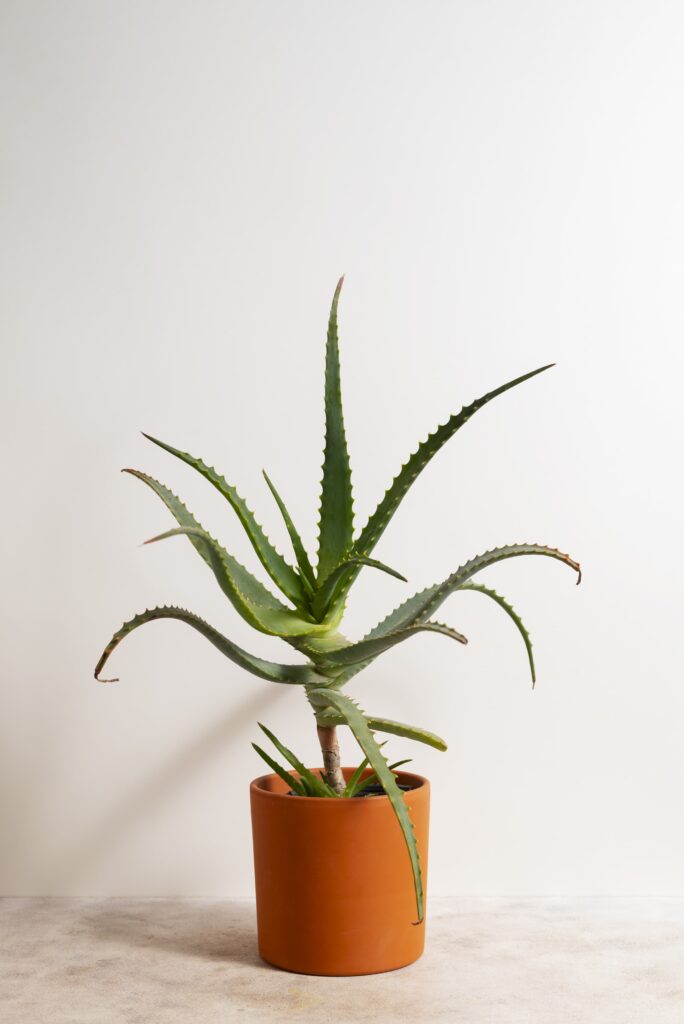
Growing an agave plant can be a rewarding experience. Here are some general tips to help you grow one successfully.).
Choose the Right Variety:
There are many species of agave, so choose one that suits your climate and space requirements.).
Provide Well-Draining Soil:
Agave plants prefer sandy or rocky soil that drains well. They don’t like sitting in water.).
Sunlight:
Most agave species prefer full sun, so make sure they get plenty of sunlight throughout the day.).
Watering:
While agave plants are drought-tolerant, they still need occasional watering, especially during their first year of growth.). Water sparingly, allowing the soil to dry out between waterings.).
Temperature:
Agaves thrive in warm climates and can tolerate high temperatures, but they may need protection from extreme heat or frost, depending on the species.).
Space:
Give your agave plant plenty of room to grow, as some species can get quite large.).
Propagation:
Agaves can be propagated from offsets or pups that grow around the base of the parent plant.). These can be carefully removed and replanted in new pots or locations.).
Fertilization:
Agaves generally don’t must much fertilizer. You can use a balanced fertilizer sparingly during the growing season if needed.).
Pests and Diseases:
Agave plants are generally resistant to pests and diseases, but keep an eye out for signs of infestation or disease and treat them promptly if necessary.).
Pruning:
Remove dead or damaged leaves as needed to keep the plant looking tidy and healthy.).
With proper care, your agave plant should thrive and can be a beautiful addition to your garden or home landscape.).
Sure, here are some additional details to help you grow agave plants successfully.).
Planting:
When planting agaves, make sure the soil is well-prepared. Mix in some sand or gravel to improve drainage if needed. Plant the agave at the same depth it was in its nursery container and water it well after planting to help settle the soil.).
Container Growing: If you’re growing agaves in containers, make sure the pots have drainage holes to prevent waterlogging.). Use a well-draining potting mix designed for succulents and cacti.).
Overwintering:
In colder climates, agaves may need protection from frost.). Consider bringing potted agaves indoors during the winter or covering outdoor plants with frost blankets or burlap if temperatures drop below freezing.).
Mature Size:
Keep in mind the mature size of the agave species you’re growing. Some species, like Agave americana, can grow quite large and may not be suitable for small gardens or indoor spaces.).
Propagation Methods:
In addition to offsets, agaves can also be propagated from seeds, although this method takes longer to produce mature plants.). If you’re propagating from offsets, wait until they’re at least a few inches tall before removing them from the parent plant.).
Drought Tolerance:
Agaves are known for their drought tolerance, but they still need some water especially during periods of extreme drought.). Water deeply and infrequently rather than shallowly and frequently to encourage deep root growth.).
Soil pH:
Agaves prefer acidic to neutral soil pH. You can test the pH of your soil and amend it if necessary to achieve the optimal range.).
Mulching:
Applying a layer of mulch around the base of agave plants can help conserve soil moisture and suppress weeds.). Use a lightweight mulch like gravel or crushed rock to avoid holding excess moisture around the plant’s base.).
By paying attention to these additional details, you’ll be better equipped to grow healthy and thriving agave plants in your garden or landscape.).